Some homes are time capsules—and not always in a good way. Step through the door and you’re instantly transported to an era of brass fixtures, busy wallpaper, and sunken conversation pits. While there’s a nostalgic charm to some of it, many of these features just scream “We haven’t updated this place since 1987.” Let’s take a tour of the unmistakable signs that a house hasn’t seen a modern touch since leg warmers were a thing.
1. Popcorn Ceilings
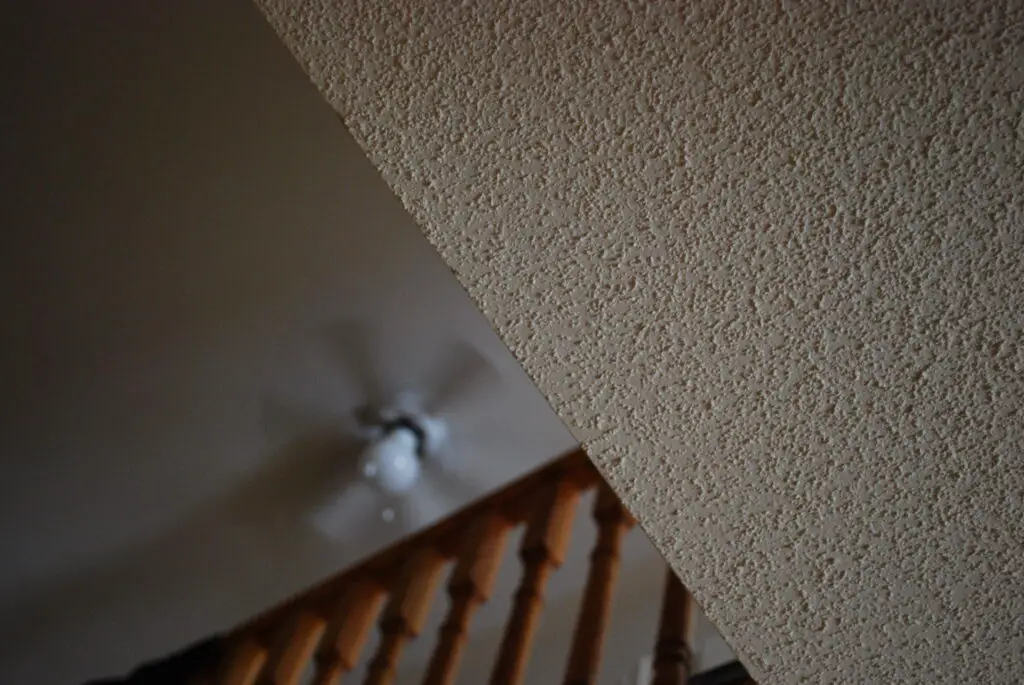
According to Apartment Therapy, popcorn ceilings were wildly popular in homes built from the 1950s to the 1980s—but they’ve fallen far out of favor. These bumpy textures were originally used to hide imperfections and absorb sound, but they now make rooms feel dated and dingy. Worse yet, older versions may contain asbestos, making removal a potential health hazard. That means a popcorn ceiling isn’t just an eyesore—it could be a pricey problem.
Despite their decline, popcorn ceilings still lurk in plenty of older homes. They cast unflattering shadows and trap dust, making rooms feel darker and less clean. Most modern homeowners opt to scrape or cover them as part of any reno. If you walk into a room and see cottage cheese overhead, it’s a telltale sign no one’s touched it in decades.
2. Brass Everything
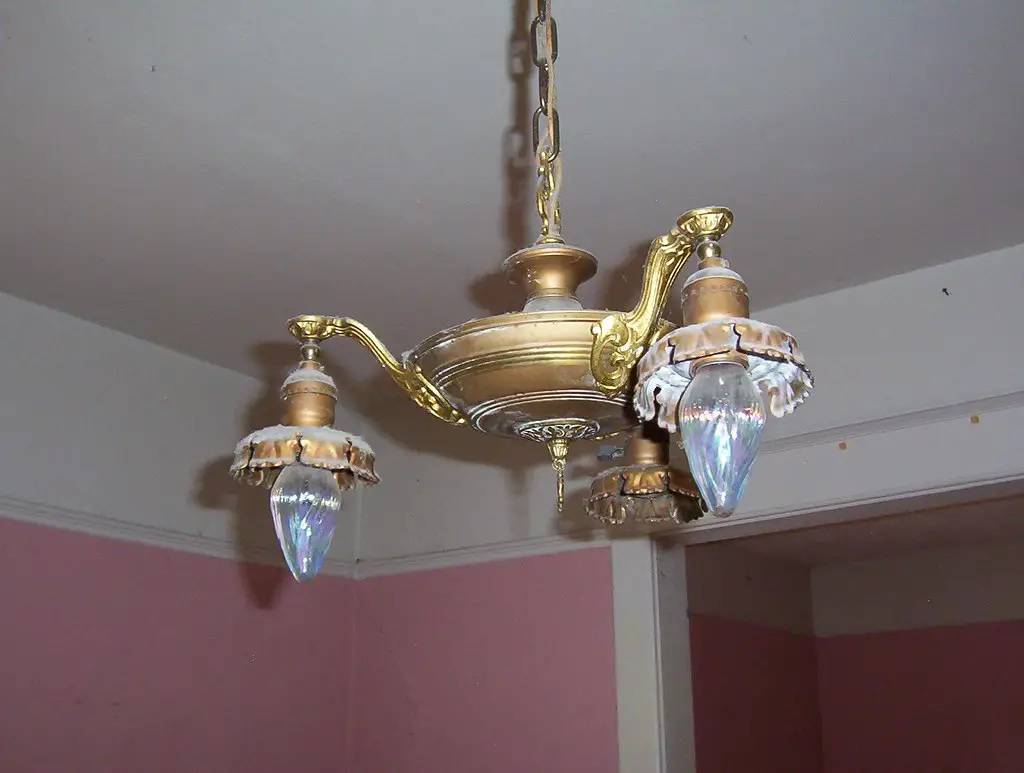
As noted by Houzz, brass hardware and fixtures were staples of ’80s design—from doorknobs and drawer pulls to light fixtures and bathroom faucets. Back then, the shiny gold-tone finish was considered upscale and polished. Today, though, it screams “dated” in most design circles. It’s been largely replaced by matte black, brushed nickel, and aged bronze finishes that feel more contemporary.
Homes that haven’t been updated still cling to their brass like it’s going to come back in style tomorrow. While some decorators have tried to reintroduce antique brass in moderation, most people aren’t talking about the bright, mirrored stuff from 1986. The problem is that it’s often everywhere—coating every hinge and outlet cover. Swap out a few pieces and suddenly the whole house feels 30 years newer.
3. Vertical Blinds
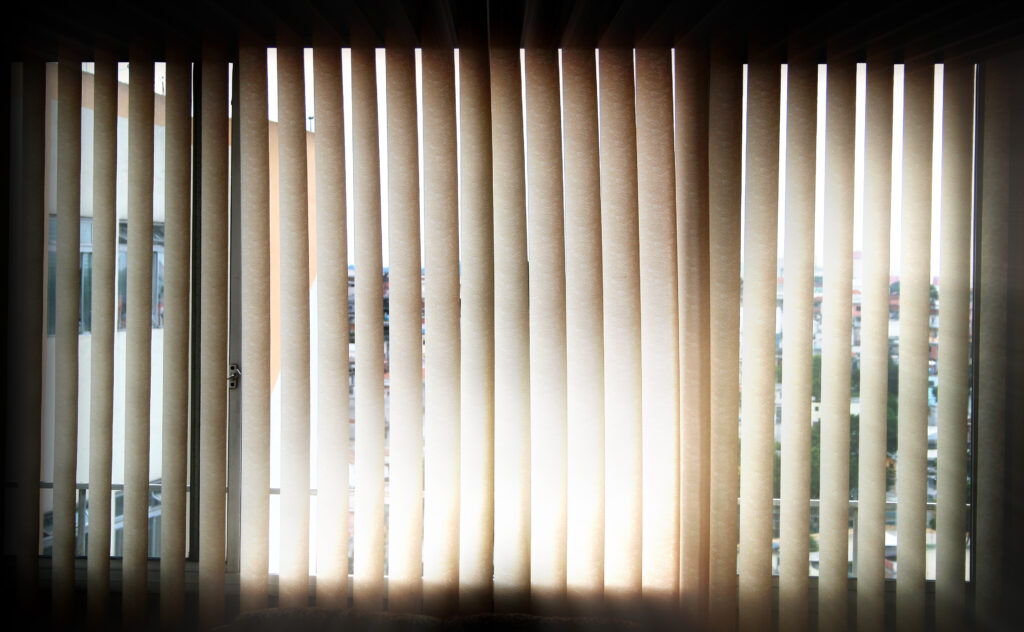
Vertical blinds were the go-to window treatment in the ’80s, particularly for patio doors and wide windows, and they’re still hanging on in some places. As reported by House Digest, they were considered sleek and modern at the time, though they’ve since been replaced by more elegant options like Roman shades and streamlined roller blinds. Vertical blinds tend to clatter, tangle, and fall off-track—none of which screams “timeless design.” Plus, they don’t offer much insulation or visual warmth.
If your house still has these in place, it probably hasn’t had a curtain refresh since George Michael was on the radio. They make rooms feel colder and more utilitarian than cozy. Not to mention, they usually come in lifeless colors like beige or off-white. A single window dressed this way is like an ’80s time-stamp.
4. Glass Block Windows

Once a darling of ’80s bathrooms and basements, glass block windows are now more retro than relevant. According to Bob Vila, these chunky windows were meant to let light in while preserving privacy—and they were considered cutting-edge at the time. But they tend to distort light in odd ways and limit your ability to install proper window treatments. They’re also a nightmare to remove or update without redoing an entire wall.
If you see a stack of glass bricks next to a jacuzzi tub, you know exactly what decade you’re in. While they’re durable, their style is hard to blend with today’s minimalist looks. Modern homeowners prefer frosted glass, high windows, or actual walls. Sadly, glass block just doesn’t block the judgment anymore.
5. Pastel Bathroom Fixtures

Baby blue toilets, peach sinks, and mint green bathtubs were once all the rage. These pastel tones turned every bathroom into something that looked like a hotel in Miami circa 1985. At the time, homeowners were embracing color and coordination—even the toilet seat matched. But now, those fixtures are nearly impossible to pair with modern tile or hardware.
They’ve become one of the biggest visual clues that a home hasn’t had a bathroom remodel in decades. And replacing them isn’t cheap—you’re often looking at redoing the entire bathroom to avoid mismatches. Pastel fixtures were designed to stand out, but they now just look loud. You can almost hear a synth-pop soundtrack when you see them.
6. Faux Wood Paneling

Faux wood paneling covered many a rec room wall in the ’80s, especially in basements and dens. It was cheap, easy to install, and added a “masculine” or “cozy” vibe—if by cozy you mean dim and depressing. The plastic or fiberboard panels weren’t fooling anyone, even back then. And now they’ve yellowed or warped in many homes that still haven’t removed them.
They’re notorious for making rooms feel like low-budget cabins or unfinished basements. Some DIYers have tried painting them to modernize the look, but it’s rarely a perfect fix. Real wood paneling might get a nostalgic pass, but fake stuff is hard to redeem. If the walls groan when you touch them, it’s probably faux.
7. Floral Border Wallpaper

In the 1980s, if your walls didn’t have wallpaper, they probably at least had a floral border around the top. These wallpaper strips were meant to add “elegance” or “charm” without the commitment of full wall coverage. Unfortunately, they’re usually too busy, too frilly, and too glued-on to survive today’s trends. And taking them down? It’s a nightmare if they’ve been painted over or poorly applied.
These borders usually include pastel roses, ivy vines, or fruit baskets—all of which aged about as well as acid-washed jeans. They also make ceilings look lower and rooms feel visually cluttered. If you’re seeing these in a kitchen or bathroom, the rest of the house probably hasn’t been touched either. Time to break out the steamer and start peeling.
8. Wall-to-Wall Mauve Carpet
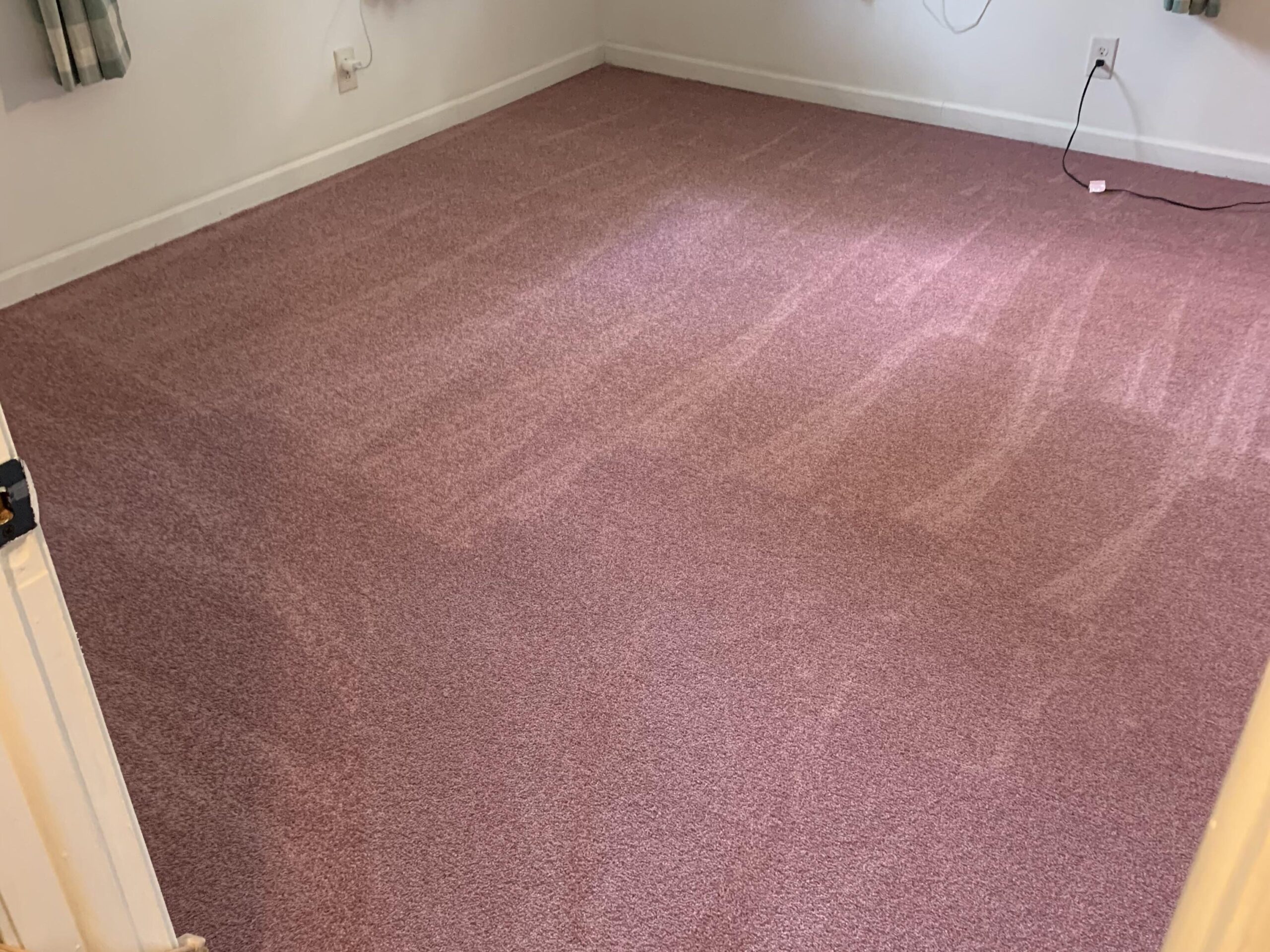
Nothing locks in the ’80s aesthetic like an entire floor covered in mauve. This dusty rose tone was beloved for its softness and “romantic” vibe, often used in bedrooms and living rooms. But like many trends of the decade, it didn’t exactly hold up. Over time, it’s become a visual cue for outdated taste and questionable vacuuming habits.
Mauve carpet doesn’t play well with modern color schemes, either. You’re stuck designing the entire room around it or ripping it out altogether. And chances are, it’s hiding some pretty scary stuff underneath. Unless you’re aiming for a vintage Barbie Dreamhouse, it’s got to go.
9. Oversized Oak Entertainment Centers
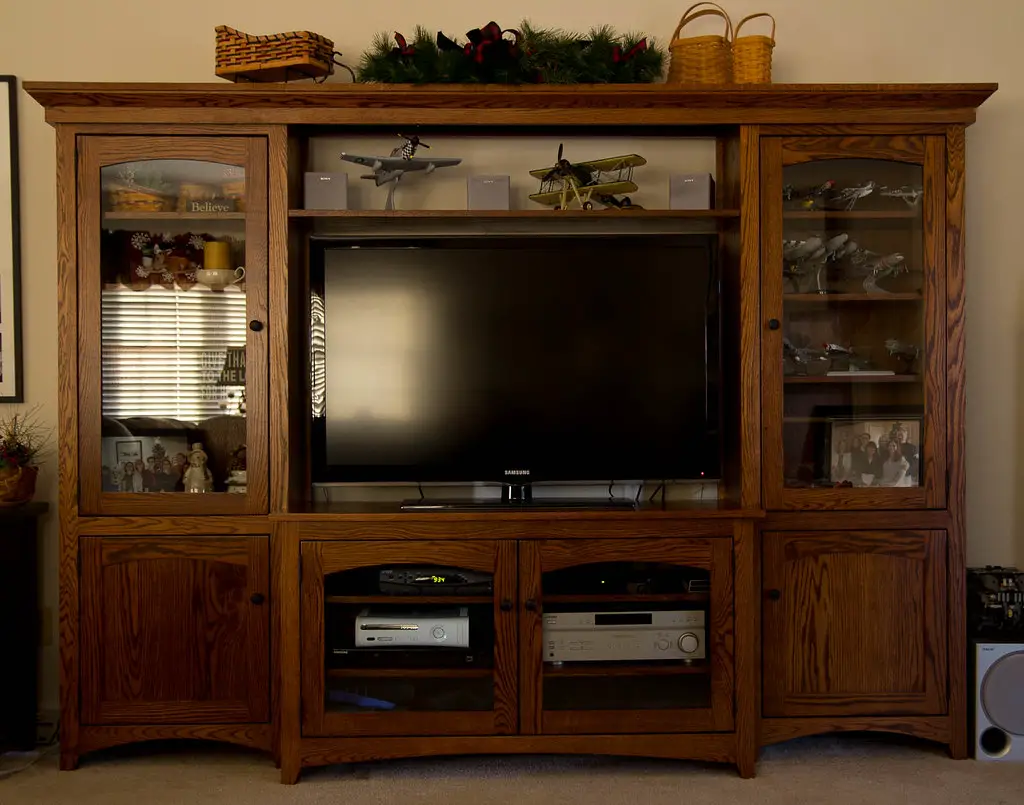
Before flat screens were mounted on walls, TVs lived inside giant oak cabinets the size of a refrigerator. These hulking entertainment centers often came with glass doors, built-in lighting, and shelves for VHS tapes and stereo equipment. They were a status symbol and a furniture staple. Now? They’re impossible to move and nearly impossible to sell.
Oak furniture from that era tends to have a yellow-orange hue that doesn’t vibe with today’s sleek, light-toned interiors. And unless you’ve got a 1992 tube TV, the built-in shelf sizing doesn’t work. Most people ditch them as soon as they move in. But if you still have one, it’s likely flanked by equally dated speakers and knick-knacks.
10. Intercom Systems
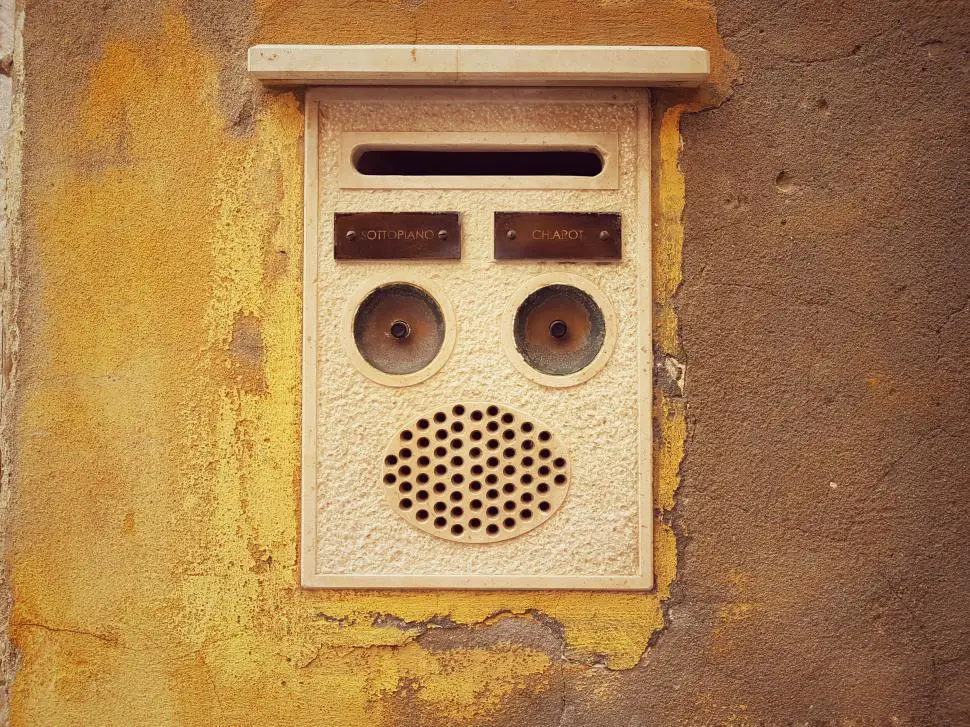
Intercoms mounted on walls used to be high-tech—especially the ones with radio and music controls built in. You’d press a button to call someone upstairs or blast music in every room. Now, it’s basically just wall clutter with a speaker that probably doesn’t work. It’s an analog solution in a very digital world.
These systems are hard to remove without creating a patch job in the drywall, so many just leave them there. And every time someone visits, they’ll ask, “Does that thing still work?” (Spoiler: it doesn’t.) It’s a built-in relic of a time when “smart home” meant anything with a button.
11. Ruffled Valances and Curtains
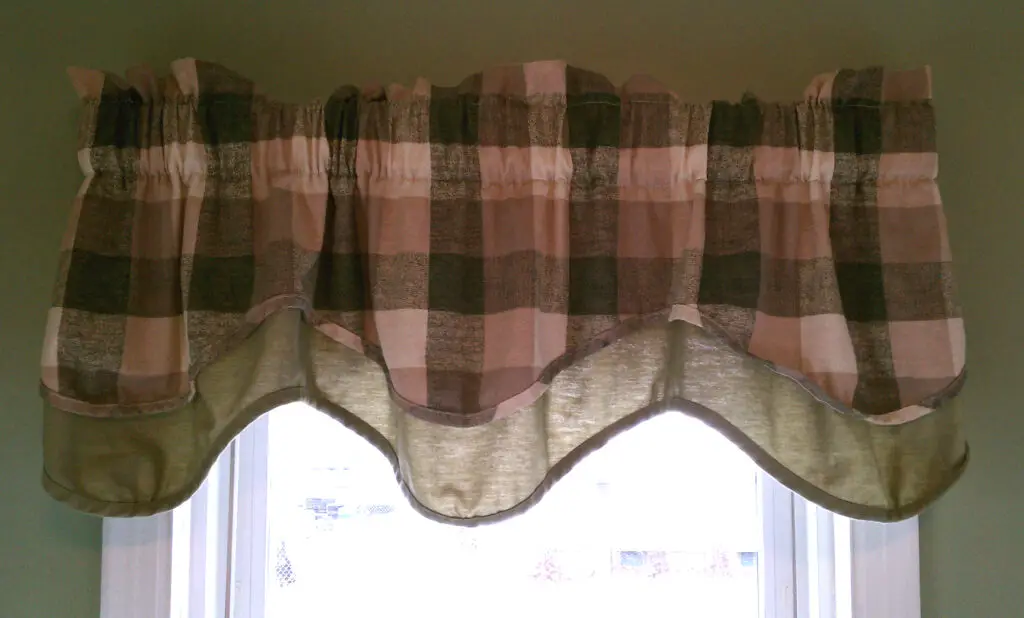
No ’80s home was complete without ruffled window valances—or entire curtain sets that matched your bedspread and maybe even your toilet seat cover. These frilly additions were supposed to soften rooms and tie everything together. But now they just collect dust and look overly fussy. Minimalism has taken their place in most updated homes.
The fabric patterns often include florals, stripes, or tiny hearts, and they’re rarely subtle. It’s the kind of detail that instantly tells you what era the house is frozen in. Ruffled valances weren’t just decorative—they were declarations. And their time has come and gone.
12. Carpeted Bathrooms
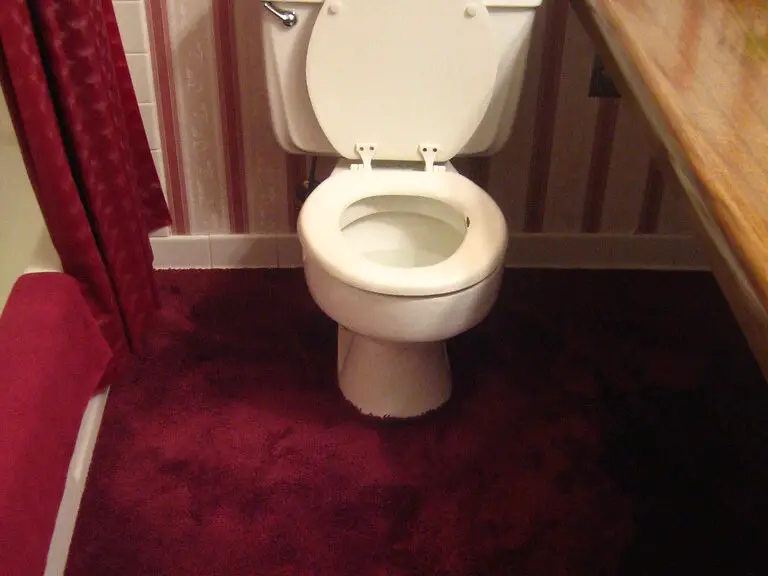
This one still baffles people today: who thought carpeting next to a toilet was a good idea? In the ’80s, it was seen as a cozy, luxurious upgrade—especially in master bathrooms. But carpets absorb moisture, odors, and germs, making them a hygiene nightmare. Mold and mildew were practically guaranteed.
If you step onto plush carpet in a bathroom, you know you’re not in a recently renovated home. Even if it looks clean, it probably isn’t. Modern bathrooms use tile, stone, or waterproof vinyl for good reason. Carpeted bathrooms are a relic of a time when “soft” mattered more than “sanitary.”
13. Sunken Living Rooms
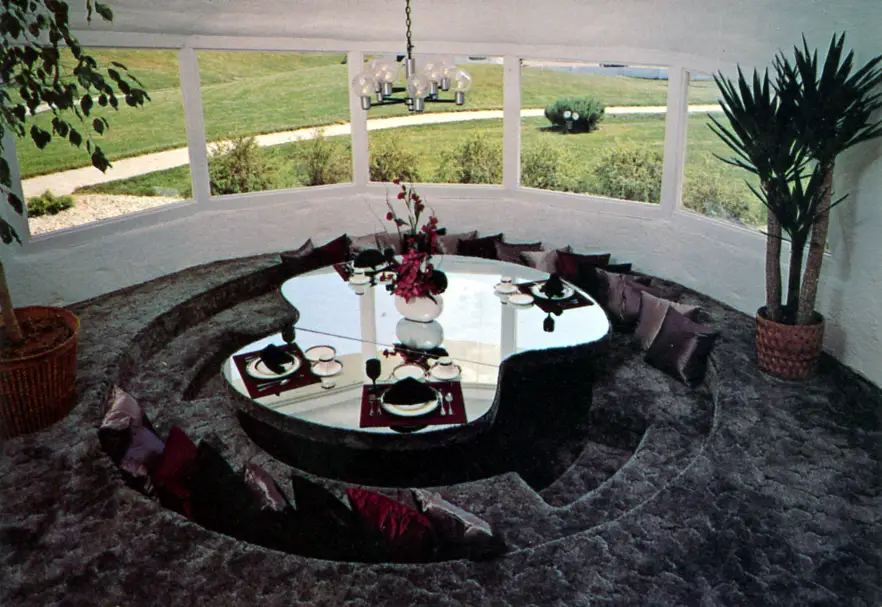
Sunken living rooms—or “conversation pits”—were meant to feel stylish and intimate. A few steps down, and you were in a cozy lounge area that often came with low-slung sofas and shag carpet. The problem? They’re a tripping hazard and hard to navigate, especially for kids and older adults.
Few homes built after the ’80s include this feature, and most remodels have flattened the floors. It’s expensive to undo, which is why many of them still exist. While they may feel nostalgic to some, most designers consider them impractical today. If you’ve still got one, you’ve definitely got an original layout.
